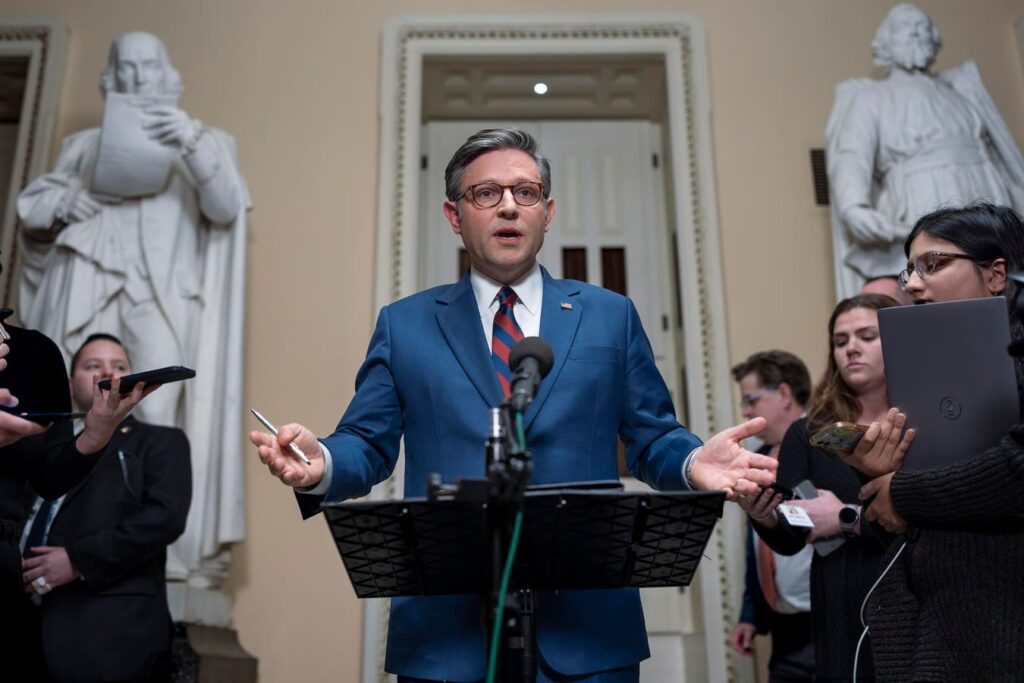As the U.S. government approaches a potential shutdown slated for December 21, 2024, Speaker of the House Mike Johnson has been engaging with reporters about the ongoing deliberations to avert such a situation. Predictions from the forecasting site Kalshi suggest there is a 40% chance the government could shut down, specifically measured by whether it remains closed at 10 AM ET on a given day. Notably, a similar risk emerged in September 2024 but was narrowly avoided. A government shutdown could have various implications, primarily dependent on its duration, with short closures expected to cause only minor disruptions, while extended shutdowns could lead to more significant economic consequences.
Historical trends reveal that most government shutdowns tend to last only a few days; however, the situation has evolved in recent years, with lengths increasing substantially. For instance, the partial shutdown in 2018 lasted an unprecedented 35 days. Although significant departments remained funded during that shutdown, it exemplifies how quickly a temporary standoff can escalate. Analysts agree that should the impending shutdown resemble the past, lasting merely a few days, the economic aftermath would likely be minimal. Nevertheless, longer disruptions could precipitate a more severe financial impact.
Importantly, many essential government functions would remain unaffected during a shutdown. Programs such as Social Security, Medicare, Medicaid, military operations, and the U.S. Postal Service would continue to operate independently of the budgetary disputes. Additionally, state and local governments typically experience limited fallout from federal shutdowns, as their operations are not directly tied to federal funding. Essential services that sustain public welfare are safeguarded, although the definition of essential activities can fluctuate depending on the specific circumstances surrounding each shutdown.
Nonetheless, shutdowns do create tangible hardships by affecting non-essential services and operations. National Parks may close, while NASA would halt all but its core functions. Furthermore, the approval of federal loans for housing and small businesses would likely be disrupted, resulting in delays that could stifle economic activity. While vital functions of air traffic control would remain operational, agencies such as the TSA may experience hindrances, leading to longer wait times at airports due to reduced staffing. Over time, industries reliant on federal contracts, particularly in the defense and health sectors, could note increased strain as non-essential government programs are suspended.
The personal financial implications for federal employees during a shutdown are particularly concerning, as they face delayed paychecks which can strain household budgets, especially during the holiday season. It is worth noting that legislation guarantees back pay once the shutdown concludes. However, federal contractors lack a similar assurance and may suffer losses in income without any guarantee of repayment post-shutdown. The necessity for employees to work during a shutdown largely hinges on the classification of their roles; essential personnel would remain on duty, while non-essential workers face furloughs, which allows for the possibility of later pay recovery.
In conclusion, while discussions are ongoing to prevent a government shutdown, historical patterns suggest any resulting disruption could be brief. However, during the shutdown, economic uncertainty will likely escalate, potentially destabilizing markets, particularly affecting businesses intertwined with federal operations. The absence of regular government economic reports during such closures may contribute to anxiety within the markets. In summary, while the immediate impacts of a short shutdown may be manageable, extending beyond a few days could lead to lasting economic challenges and heightened variability within the financial sector.

